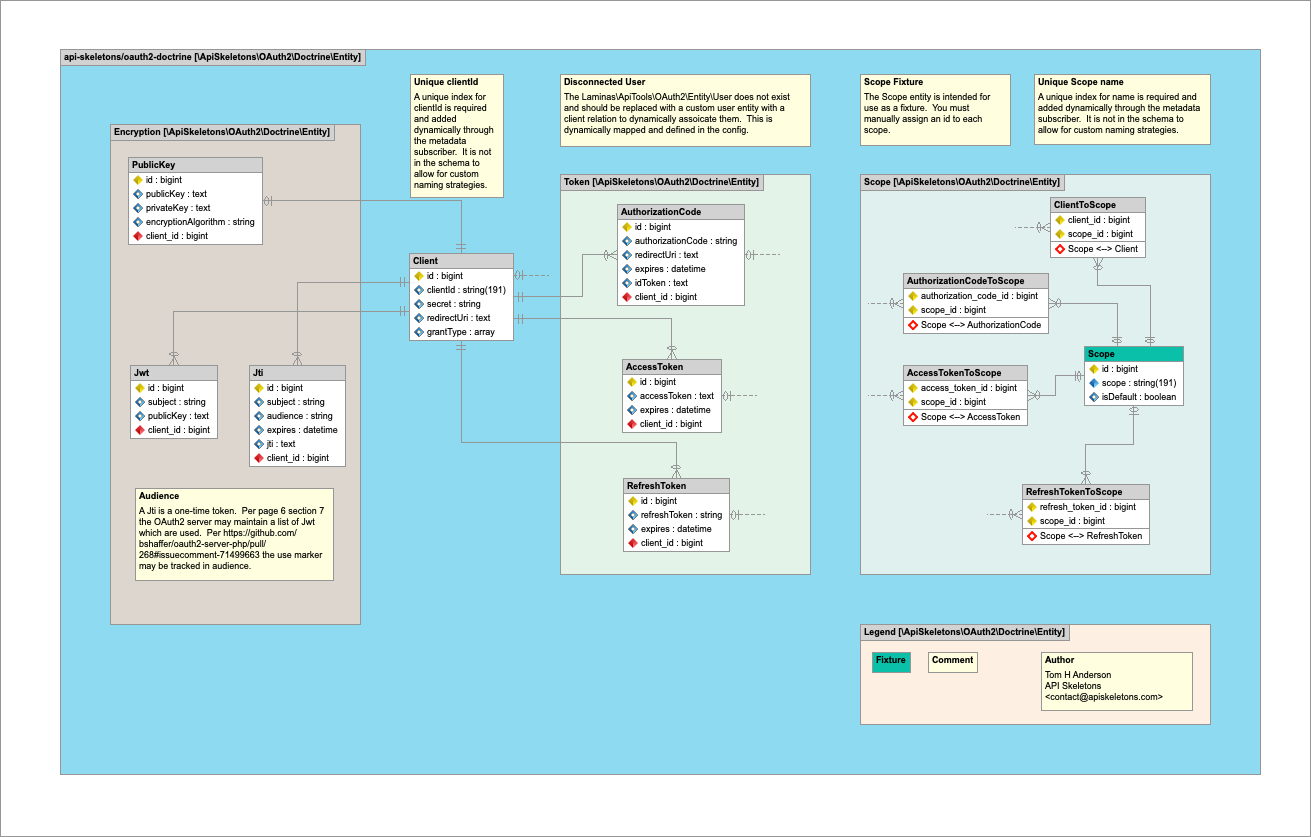Entity Relationship Diagram¶

Entity Relationship Diagram created with Skipper
The Skipper module is located at media/OAuth2-orm.module.xml and is intended to be embedded in the Skipper ERD for your project.
Relations¶
The User entity is provided by your application and a dynamic join is made at runtime when the metadata is gathered for Doctrine. There is a dynamic join with Client, AuthorizationCode, AccessToken and RefreshToken.
The central OAuth2 entity is the Client. There is a dynamic join from the Client entity to the configured User entity. For every application owned by a User there will be a Client entry. The User referenced from a Client is the User who owns that Client.
The AuthorizationCode entity is used when a User connects from an application using OAuth2. The reference to the User entity from the AuthorizationCode entity is for the User that is trying to log into the Client referenced from the AuthorizationCode entity. The same is true for the AccessToken and RefreshToken entities.
The Scope entities are many to many relationships for Client, AuthorizationCode, AccessToken and RefreshToken. Scopes dictate what permissions a Client has into the API. The Scope entity is a fixture.
There is a one to one relationship from Client to PublicKey. This is because the encryption side of OAuth2 is less common and to encapsulate the encryption fields into the PublicKey entity. The JWT and JTI entities provide full support and their use in encryption falls outside the scope of this documentation.
Database Table Namespaces¶
All OAuth2 tables are suffixed with _OAuth2 such as Client_OAuth2. You can change these if you override. It is recommended your database table names match your entity names to provide canonical naming across your application. See also bushbaby/zf-oauth2-doctrine-mutatetablenames.
This is documentation for API-Skeletons/oauth2-doctrine. If you find this useful please add your ★ star to the project.
Authored by API Skeletons, Inc. All rights reserved.